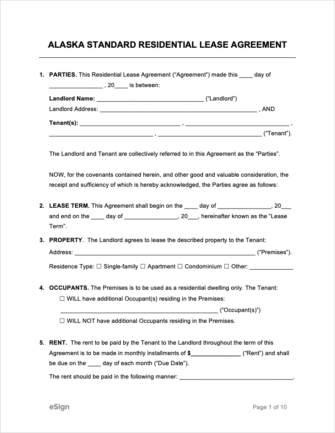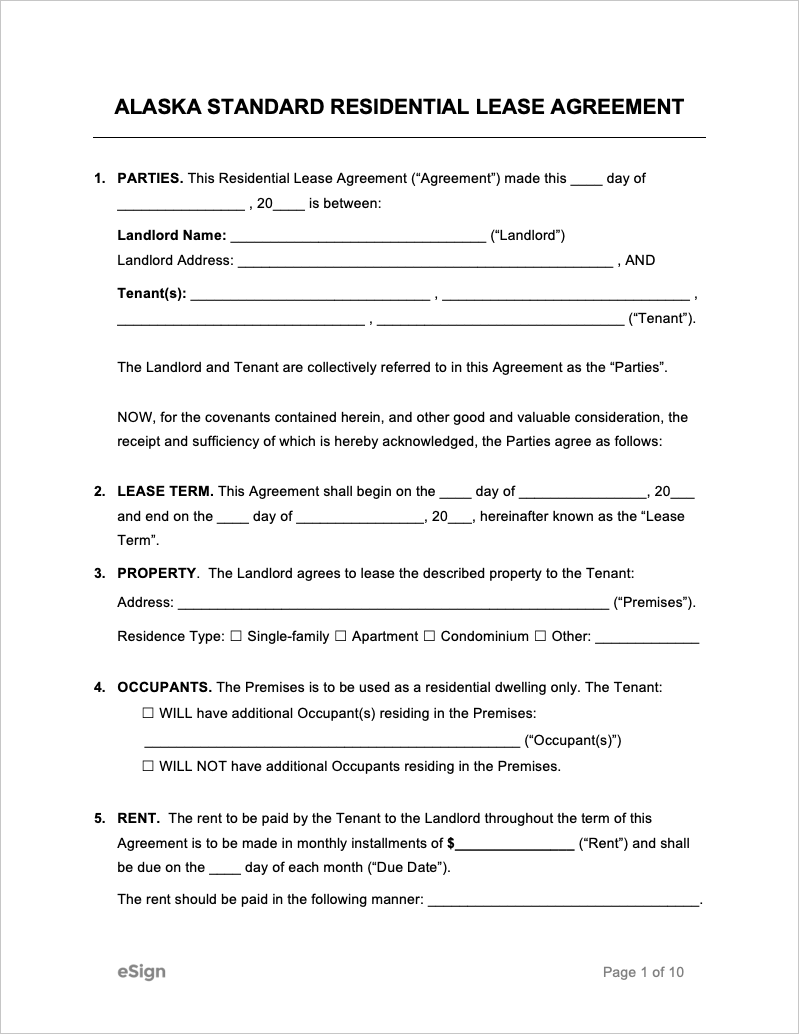Required Disclosures (4)
- Absence – A statement must be included in the lease that informs the tenant they must notify the landlord if they plan to leave the property for a period longer than seven days.[1]
- Landlord’s Information – The tenant must be given the name of anyone who is authorized to manage the property or receive service of process.[2]
- Lead-Based Paint Disclosure (PDF) – If the structure was built prior to January 1, 1978, the tenant must be made aware of the potential existence of lead-based paint.[3]
- Withholding Security Deposit – Tenants must be made aware of the conditions that would prevent them from receiving their full security deposit or prepaid rent at the end of the tenancy.[4]
Rent Grace Period
There is no grace period in Alaska. Rent is due, without demand, at the time and place mentioned in the lease.[7]
Landlord Resources
- Uniform Residential Landlord and Tenant Act – AS 34.03
- Handbook (Guide) – The Alaska Landlord & Tenant Act (What it Means to You)

